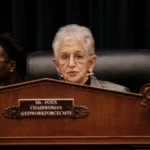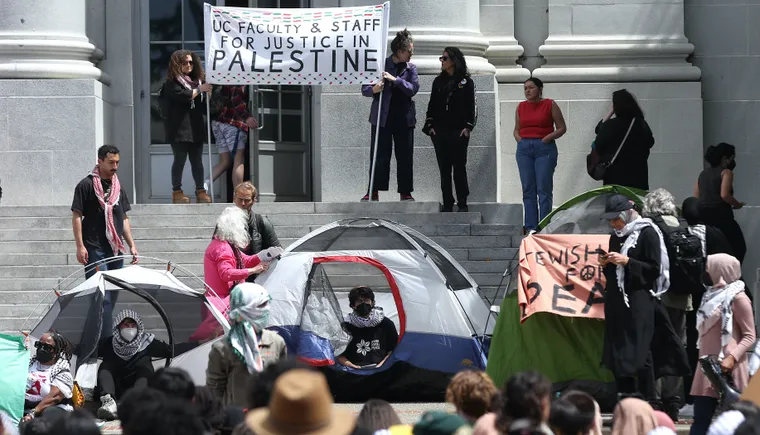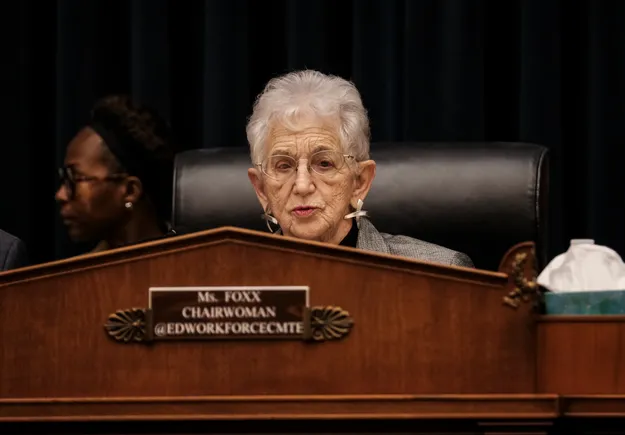In 2018, when Dr. Tim Renick took on the role of senior vice president for student success at Georgia State University (GSU), the university’s demographics were rapidly changing. Historically, GSU had been a predominantly white institution (PWI).
 Dr. Tim Renick
Dr. Tim Renick
In the early aughts, Renick says, it was standard practice for student support programs to address equity gaps and low graduation or retention numbers through the creation of targeted programs, like initiatives for first-generation students, and African American male initiatives.
But part of the challenge, he says, “is that 80% of our students self-identified as having minoritized backgrounds, and 60% were Pell students. It seemed like everybody needed a targeted program.”
Renick says that given the limited resources, Georgia State started to think of new and innovative ways to address the needs systematically for all students. Renick knew GSU did not have enough academic advisors to give their roughly 50,000 undergraduate students the kind of support and attention that might be found at a more resourced institution with more staff. In 2012, he says he realized he could use modern technology to amplify the support structures and staff they did have in place.
“The idea was, rather than waiting for students to self-identify their own problems and come to an advisor, let’s try to equip advisors with information on which students are struggling, so [the advisors] can target daily efforts where it would make the biggest difference,” says Renick. “The moment to really intervene is as soon as it happens. Let the advisors know the moment the student withdraws, and the next day, have the advisor reach out.”
GSU began relying on predictive data to proactively assist students. GSU’s student support team created a system of automatic micro-grants, which would be auto distributed to students in need. Over the last decade, the program has given out roughly 20,000 grants and has become a national model.
The team also built an AI-enhanced chatbot that addresses over 200,000 student questions and exchanges monthly. A thorough collection and review of the chatbot data began to reveal compelling stories, Renick says. Students were unenrolling for “the wrong reason,” he says, like having performed poorly on a quiz but being unfamiliar with institutional resources that could help them. Renick’s team also discovered that certain courses did not pair well together, and students should be advised to take them successively instead of concordantly.
By using innovative advising and proactive supports, GSU’s equity gaps suddenly disappeared. There’s been a 234% increase in undergraduate degrees for Latinx students, and GSU has seen a 50% reduction in withdrawals from students who have an outstanding fee or balance when they access the AI chatbot.
“Graduation rates for bachelor’s degree students at GSU went up by about 70%, and for associate students they more than tripled, over a 300% increase,” says Renick. “We began to get a lot of visitors who were interested in two things: the fact that we were able to raise our graduation rates, and that all these interventions disproportionately benefitted students from underserved backgrounds.”
By embracing the potential of data, technology, artificial intelligence, and predictive analysis, Renick’s team was able to quickly and effectively search databases and identify any one of over 800 signs of distress or risk factors for students stopping out. This work would eventually lead to GSU’s development of the National Institute for Student Success (NISS).
National outreach
Although NISS has only been in existence for a little over two years, it has helped hundreds of institutions from across the nation reach millions of students, particularly Black, Brown, low-income and first-generation students, looking to increase graduation rates and close equity gaps. NISS has raised graduation rates by an average of 4.5 percentage points — four times better than the national average of .8 percentage points, as calculated by the National Student Clearinghouse, a nonprofit organization that collects enrollment data for almost all U.S. postsecondary institutions.
 Dr. Jessica Rowland Williams
Dr. Jessica Rowland Williams
The diagnostic and playbook process takes about five months, says Dr. Jessica Rowland Williams, senior director of NISS’s Client Service Delivery. Data are gathered from several sources, including from the National Center for Education Statistics and Steppingblocks, a data company that sweeps the internet for information on student careers and incomes. Surveys are distributed to student success leaders on campus, where they are presented with a best practice and asked to indicate how well their institution is aligned with that practice.
“From there, we go into the playbook development phase, and that’s where we begin to craft custom recommendations that directly address challenge areas, and then build out implementation steps that align,” says Rowland Williams.
“We’re offering advice as a collection of practitioners who’ve done the work. We don’t just say, ‘Do XYZ,’ we say, ‘This is how, this is the first step to take, this is how many people need to be involved, and this is how much it will cost,’” says Rowland Williams. “We get very specific about the how, not just the why or what.”
The findings of the diagnostic and playbook are then presented to the institution’s president and their cabinet in person by Renick. From there, institutions can choose to continue working with NISS throughout the implementation of the playbook.
Not every school is ready for that step, of course, adds Rowland Williams. And some opt to pursue the work on their own. But when NISS gets involved, they commit to an institution for up to three years.
While many institutions seeking NISS’s help are experiencing depressed graduation numbers, one institution called on NISS because they had a unique problem. California State University Monterey Bay (CSUMB) had excellent graduation rates, but they couldn’t figure out why.
In 2015, the California State University chancellor put forth a challenge to the state’s university system: Graduation Initiative (GI) 2025. In order to meet the state’s workforce needs, California institutions were asked to increase the six-year graduation rate to 60%, reduce equity gaps for minoritized and low-income students, and increase on-time graduation rates for freshman and transfer students. This was to be accomplished by the year 2025.
“We were the only one to meet and exceed all the chancellor’s targets,” says Dr. Dale Grubb, associate provost for academic planning and institutional effectiveness at CSUMB. “[We were] getting students graduating in a timely and equitable way.”
Because the governor’s initiative came with such a generous budget, Grubb says CSUMB “threw everything” at the challenge.
“It made it hard to decide what really worked. GI 25 is coming to a close, the funding was stopping. We couldn’t continue to throw everything at the goal in a timely, equitable manner,” says Grubb.
Dr. Michelle Mayo, associate provost for student success and dean of undergraduate studies at CSUMB, knew about NISS through her previous role at North Carolina Central University (NCCU), an HBCU. Mayo knew that NISS had helped NCCU achieve record enrollment and increased retention and suggested that NISS could help CSUMB understand how they could target their resources to keep their boosted retention and graduation rates.
Grubb says NISS’s diagnostic and playbook for CSUMB, shared with institutional leadership in person by Renick in May 2024, were “really impactful and exciting. There was a real enthusiasm and energy for continuing the work in a more focused manner.”
“NISS came in, got to know us well, in such detail, asking questions we should have asked ourselves. They did a thorough investigation before they formed ideas,” says Grubb.
Grubb and Mayo agree that one of the best parts of working with NISS wasn’t just the practicality of their solutions, but the price tag.
“The beauty of it is, it’s things we can do that’s not going to break the bank. These are things we can do, roll-up-our-sleeves things, that we can do that will have an impact on every student on campus,” says Mayo. “These are students with real lives. There’s no time to mess up, no room for error. Our participation in NISS’s implementation cohort will allow us to move successfully, so we can start having an impact on our students right out of the gate.”
Renick says that, while NISS services do come with a fee, thanks to philanthropic support, they are able to offer most of their services to MSIs at little to no cost.
It takes a level of humility to begin the process with NISS. Institutions, Renick says, need to be able to ask themselves, “are we the problem?”
“Ten to 12 years ago, if I went into a room and talked predictive analytics, a lot of people would be skeptical. What we find is that the mindset has changed. Now, almost everyone acknowledges we do have some responsibility for identifying which students are struggling, in many cases before they self-diagnose. We are responsible for reaching out,” says Renick. “We created complex bureaucracies. We need to help. Proactively.”
#Leaning #Practices #Diverse #Issues #Higher #Education










